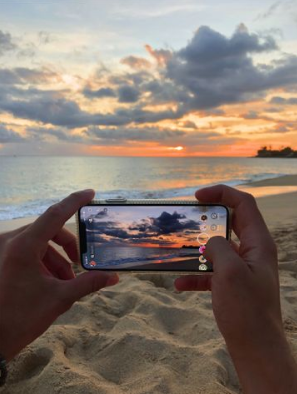Atmospheric art of the sun

A capture of the sunset on the beach of the ocean from VSCO.
April 13, 2022
Most evenings when the skies are not covered in clouds, our cities are greeted by arrays of sunsets. Although not all of them are extravagant, each one is never the same as the ones before. Like a palette of limitless colors, the skies display different hues of gorgeous purples, oranges, blues, pinks, etc. I always take the time to admire the artwork whenever presented at times throughout the evening, but I’ve never thought too far into depth about why each sunset has such bright colors. Obviously the sun reflects warm tones and the sky is blue, but where do the vivid pinks and purples come from?
UW-Madison meteorology professor UW claims that “The colors of the sunset result from a phenomenon called scattering.” Scattering is the change in movement of atmospheric molecules that change the direction of light rays, which “explains the colors of the sunrise and sunset,” Ackerman says. “Because the sun is low on the horizon, sunlight passes through more air at sunset… than during the day, when the sun is higher in the sky. More atmosphere means more molecules to scatter the violet and blue light away from your eyes. If the path is long enough, all of the blue and violet light scatters out of your line of sight. The other colors continue on their way to your eyes. This is why sunsets are often yellow, orange and red.”
Sunsets are equally gorgeous, but as NOAA meteorologist Stephen Corfidi stated, “.peak sunset season for the middle latitudes (think the Northeastern United States) is November through February, and it has to do with the confluence of a few meteorological factors.” Such as how the enhancement of cleaner air and lower humidity produce more intense sunset colors, how when twilight lasts longer those pure colored sunsets linger, and etc. But in my opinion, sunsets are most enjoyable when you’re able to watch them outside on a comfy hammock, not from a window since the outside is below zero.
Generally there are two times where you’re able to admire the colors of the sky: sunsets, which we have assessed, and sunrises. But the only factor limiting me to sunrises is how early they can be in the morning. And if you wake up in the morning to watch the sunrise, will there even be any, or did you just waste your precious sleep to watch the clouds pass?








